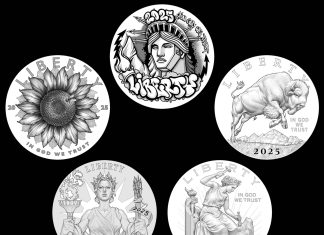An uncorrected reporting error republished by more than 1,000 media outlets worldwide negligently included a bogus pre-auction estimate of the 1943 Bronze Lincoln Cent auctioned Jan. 10, 2019 by Heritage Auctions.

South West News Service (SWNS), a global wire service, issued an article to its subscribers stating that the coin was expected to sell for the inaccurate estimate of $1.7 million. The correct estimate from Heritage was $170,000 to $200,000. The error was simply a made-up number by a staffer at SWNS based on an internet search result of a much rarer but similar coin.
SWNS’s number was not in any press materials provided by Heritage to the service. The final article was never approved by or fact checked with Heritage Auctions before it was sent to the wire service’s customers. While the erroneous estimate was not attributed to an auction house expert or representative, many of SWNS’s media clients naturally assumed the figure had come from Heritage.
SWNS admitted its error via email to Heritage Auctions on Jan. 8, 2019, shortly after erroneous stories appeared in prominent media outlets just two days before the coin was set to sell at auction. However, the mistake was not corrected before media outlets published articles around the world.
The coin sold for $204,000, well in line with Heritage Auctions’ original estimate of $170,000 to $200,000. It was part of a very successful January 6-16, 2019 series of numismatic auctions by Heritage, which realized over $70 million, well exceeding pre-sale estimates.
The error has ultimately become the basis of misleading and, in some instances, damaging post-auction news reports by some of the worlds’ most widely read media outlets.
Heritage Auctions strives to provide its clients accurate and transparent pre-sale estimates at all times. SWNS’s error has cast a pall on the successful sale of one of America’s most famous coins. Heritage is demanding that the wire service issue a worldwide correction and that its representatives contact those media outlets that have published misleading and negative articles to set the record straight.
Heritage Auctions (HA.com) is the largest fine art and collectibles auction house founded in the United States, and the world’s largest collectibles auctioneer. In addition to its headquarters in Dallas, Heritage has offices in New York, Beverly Hills, San Francisco, Chicago and Palm Beach, Paris, Geneva, Amsterdam and Hong Kong.






I want to know what is so special about a 1943 penny? Why is it rare?
1943 pennies were never supposed to be made with copper planchets. They were all supposed to be made of nickel plated steel, to conserve copper for the war effort. A very small number of copper pennies were minted by mistake and that is why they are so special and rare. The steel pennies are not worth the metal with which they were minted, but the copper ones are worth a small fortune.
Minor correction: “steelies” were plated with zinc rather than nickel, which was also a strategic metal.
The zinc plating proved to be unsatisfactory because it quickly wore off in spots, allowing the underlying steel to rust; the rest of it reacted with moisture, skin oils, etc. and turned an ugly gray. The gray color also led many people to erroneously believe the coins were struck in lead, a misunderstanding that persists even today.
It is rare as the 1943 penny was struck in steel due to the war resulting in a shortage of copper. A few were struck in bronze. http://www.pcgs.com/coinfacts/category/half-cents/lincoln-cent-wheat-reverse/type-2-steel-1943/1613
erv is right. These are a very famous error, though as the link says the regular (steel) 1943s are of very low value. Incidentally, the mint went back to copper in 1944, but a few steel cents were made in error. While rare, they don’t have the cachet of the ’43 coppers. Anyway, interesting material though the chance of finding any in circulation is zero.